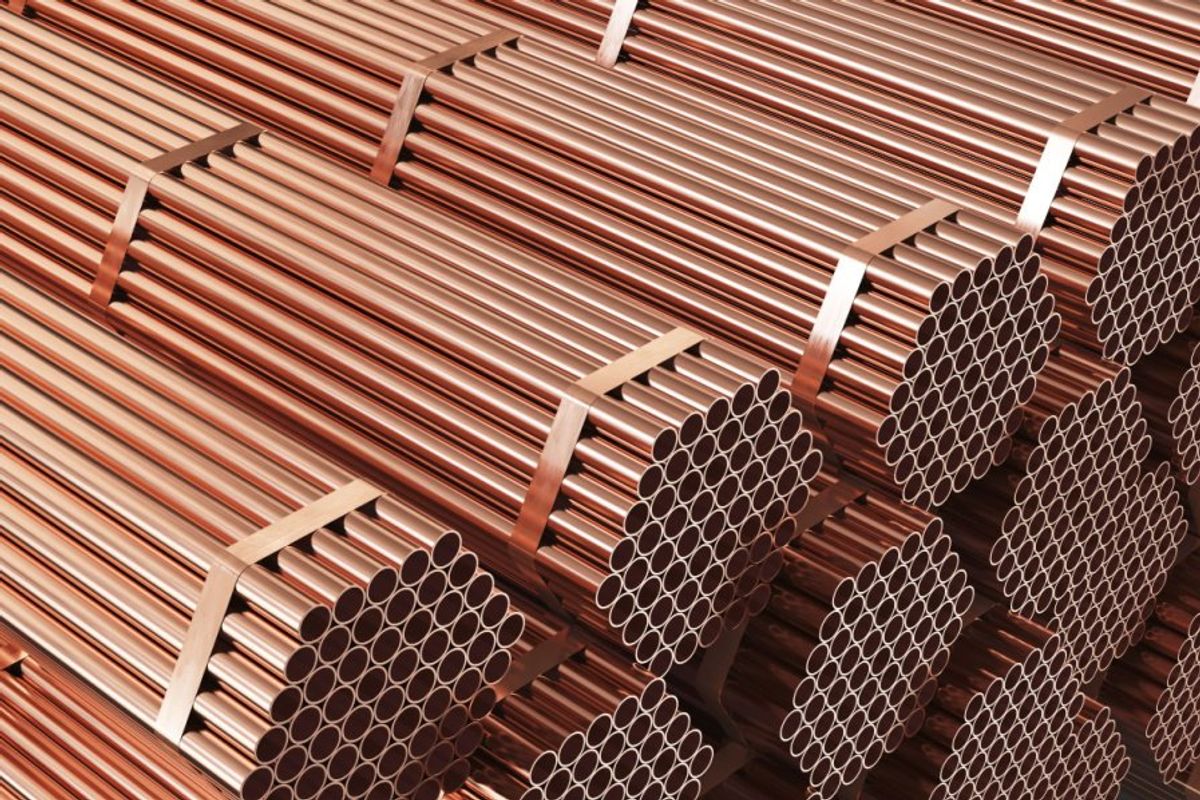LME Copper vs. COMEX Copper
For those new to copper investing, keeping track of copper prices can be confusing. Here’s a short overview of COMEX copper and LME copper.

For those new to copper investing, keeping track of copper prices can be confusing. Below is a look at the different metals exchanges that copper investors should know about.
Copper traded on the London Metal Exchange (LME), or LME copper, is priced per metric ton (MT). COMEX copper, or contracts traded on the COMEX division, is priced per pound.
Both markets provide valuable information for copper market followers and copper stock investors. Here’s a short overview of both LME copper and COMEX copper, and why it’s key for investors to know what they are.
What is LME copper?
LME copper refers to copper traded in London on the London Metal Exchange, on which options and futures contracts for industrial metals are traded. The term LME copper may refer to spot LME copper prices or prices for futures contracts on the London exchange.
LME copper futures contracts may be set at up to three months with daily expiration dates, or between three and six months with weekly expiration dates. There are also longer contracts of up to 123 months.
The exchange also publishes daily reference prices for LME copper and other metals that are used by market participants. Overall, the exchange is predominantly used to either hedge or take on price risk.
LME copper contract prices are quoted in US dollars and are sold in lots of 25 metric tons. They can be settled via physical delivery between a network of LME-approved warehouses around the world. For this reason, LME copper may also refer to inventories of copper cathode in LME warehouses.
In addition to acting as a futures trading exchange and providing reference prices, the LME acts as a physical market of last resort for producers and consumers of a number of metals, including copper.
In other words, those in the copper industry may sell LME copper during oversupplied markets and draw on LME copper inventories in the event of a copper shortage.
Some market watchers look to rising and falling inventory levels on the LME as an indicator of global supply and demand conditions. However, it’s important to note that physical delivery is the exception, rather than the norm.
What is COMEX copper?
COMEX copper is copper traded on the CME Group's (NASDAQ:CME) Commodity Exchange, abbreviated as the COMEX. The term COMEX copper can refer to both spot copper prices on the COMEX and copper contracts traded on the exchange.
Headquartered in New York, US, with offices all over the world, the COMEX is a commodities futures and options exchange similar to the LME. Both the NYMEX and the COMEX, which merged in 1994, are owned by CME Group.
As mentioned above, copper contracts are priced per pound on the COMEX. Listed contracts are available during the current calendar month, the next 23 calendar months and any March, May, July, September or December within a 60 month period of the current month.
Contracts are also block-trade eligible if the amounts are above minimum thresholds. These types of trades are privately negotiated and executed apart from the public market. They are only open to eligible contract participants as defined by the Commodity Exchange Act.
Copper cathode must meet specific chemical and physical requirements in order to trade on the COMEX. COMEX copper futures are settled via physical delivery upon expiration, but COMEX E-Mini copper futures are cash settled.
As with the LME, many banks, trading firms and commercial hedgers use COMEX copper for risk management purposes, and CME Group prides the COMEX on being a “global benchmark for copper prices” used by respected indexes such as the Bloomberg Commodity Index.
The importance of commodities exchanges
The LME and the COMEX are far from the only commodities exchanges on which copper is traded. The Shanghai Metal Exchange is another notable example, and with China being the largest consumer of refined copper at around 54 percent of global consumption, it is becoming increasingly important.
Still, prices for LME copper and COMEX copper contracts, as well as information on inventory levels, can be a valuable piece of the puzzle for those making investment decisions in the copper space. For example, those investing in copper stocks may want to look at whether a company’s mining project is likely to be economic at current and/or forecasted copper prices.
This is an updated version of an article first published by the Investing News Network in 2015.
Don’t forget to follow us @INN_Resource for real-time news updates!
Securities Disclosure: I, Melissa Pistilli, hold no investment interest in any company mentioned in this article.
Editorial Disclosure: The Investing News Network does not guarantee the accuracy or thoroughness of the information reported in the interviews it conducts. The opinions expressed in these interviews do not reflect the opinions of the Investing News Network and do not constitute investment advice. All readers are encouraged to perform their own due diligence.
- What Was the Highest Price for Copper? (Updated 2024) ›
- Copper Price 2024 Year-End Review ›
- Copper Price Forecast: Top Trends for Copper in 2025 ›
- Is the World Running Out of Copper? ›
- Copper Refining: From Ore to Market ›
- How to Invest in Copper | INN ›





